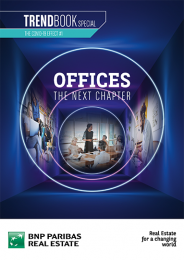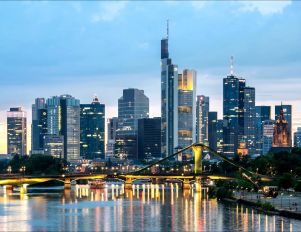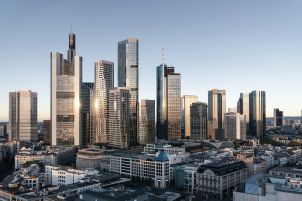Opinion piece: Csongor Csukás and Magali Michel
Immediately after the first cases of infection were identified, the BNP Paribas Real Estate Property Management teams across France were able to implement the necessary processes to ensure business continuity across all the portfolios that we manage. How to clean buildings and how to effectively communicate with tenants and occupiers about the steps that were being taken, were part of the guidelines that we were able to develop and quickly deploy. Following the measures announced and rolled out by the French government, we experienced the closing of the vast majority of the buildings, as most occupiers found themselves in lockdown, with almost all their employees working from home.
As a result of the measures taken from 16th March, tenants and landlords were forced to adapt their businesses, meaning Property Management became a central figure, called upon more than ever for information, becoming a hub of communication. This has meant an even greater need to stay in close contact with all concerned parties and to provide tailored advice for each and every property. Throughout this crisis, the Property Management team has facilitated relationships; overseen building cost budgets and maintained health measures within buildings. It is this constant flow of new information and spontaneous events that puts us in a central position for understanding how we can best advise our clients on structures that need to be put in place, in order to get occupiers back into their office buildings.
Safely returning to our places of work
As the World Health Organisation set out in a recent global communication, “Long term success cannot be taken for granted. All sections of our society – including businesses and employers – must play a role if we are to stop the spread of this disease.” It therefore goes without saying that a return to a workplace must be carefully considered and all aspects of the building’s shared spaces must be thought over, as people move between them safely, following their user journey.
All properties are unique and differ in terms of their size, the nature of their activity, the proportion of common areas compared to leased, the variety of services available in the building and of course whether there is more than one company sharing the same building. All these factors play an important role in determining the appropriate measures to be implemented.
Thanks to the data collected in relation to the occupation of buildings throughout the period of lockdown, we have been able to put together our own set of guidelines for the safe return to office buildings. These remain generalised and we will be working closely with our clients to give personalised advice on topics such as maintaining the shared spaces and services offered by the building, like the gym and restaurant.
How to prepare for going back to the office?
No matter what the activity being carried out in a building is, each building in our portfolio will see changes. Before coming back to the office, the Property Manager, along with the landlord and tenant, must think carefully about the new organisation, particularly in terms of where people come into contact with one another and how 100% fresh air is circulated. Question such as, ‘Are there ways to avoid people touching things in the building?’, ‘Can people move around using a touchless badge?’, ‘Can doors be opened automatically?’ will be raised. Clearly, each part of an office building needs to be considered individually.
Changes in each building will be made on an individualised basis but the teams at BNP Paribas Real Estate Property Management have produced guidelines that aim to support clients in their choices. Across Europe, documents have been produced which demonstrate the services available and offer detailed description of fitting solutions, such as temperature taking machines that can be installed into offices. The adoption of such solutions vary between countries and budgets, so it is important to consider what is right for each building, as we offer support to landlords and tenants and reassure occupiers when returning to the office.
An adapted office but a better understanding of the future
We have to accept a new normality in our offices during the pandemic in terms of how we move around, which will affect how we analyse our buildings. Whilst once we had a solid idea of this and as such the needs for different services, as we experience the lifting of lockdown, these habits are again going to change. Most businesses will start to bring employees back to the office gradually; they will only be at 10-15% capacity. This means a return to “normal” will be progressive and adaptations are likely to be made gradually meaning understanding new behaviours will evolve quickly.
Whilst we believe we will once again find the buildings we knew before, this experience is going to change how we adapt to such events in the future. We must learn to be more aware of how our environment can affect us, and consequently the impact we can have on the environment. Greater understanding of the importance of emotional links and collective intelligence will be key to better assessing the evolving role of Headquarters and more generally the evolving functions of buildings.
Flexibility is also going to be crucial; the fact that so many people have succeeded in working from home for an extended period means we will see more integration of remote working. This will impact how we plan our offices but also how leases are conceived, in order to be more agile. The Covid-19 has forced us to adapt quickly to a situation that was completely new to us. It has shown that we are able to capitalise on our central position in the value chain, supporting landlords and tenants throughout all these challenges. From this position, we have learnt a great deal, particularly regarding the importance of quick and flexible action. This will be vital as we traverse this situation and will solidify the position of the Property Management profession for the future.

TrendBook Offices: the next chapter
What is life in our offices going to look like post Covid?
Take a deeper look at the trends, innovations and new ways of interacting with space that are going to affect our professional spaces.




